The Humble Anti-Tank Block
31/05/2017 | Megan Clement
Anti-tank blocks are perhaps what might be considered a fairly uninspiring legacy to the past. They might not be sensational as a trackway or as impressive as wrecked vessels. But they are perhaps the most resilient and abundant defensive structure you will find on the foreshore today and these were made in vast numbers to line the coasts of Britain. Many people overlook the anti-tank blocks as an archaeological feature, usually overshadowed by neighbouring pillboxes, gun emplacements and other coastal defences, but they were as integral part of coastal defensive crusts.
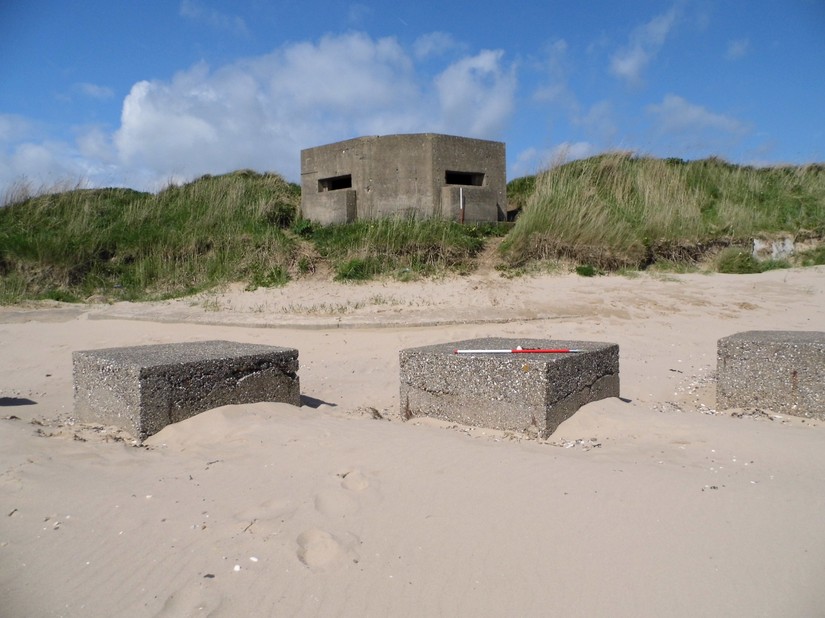
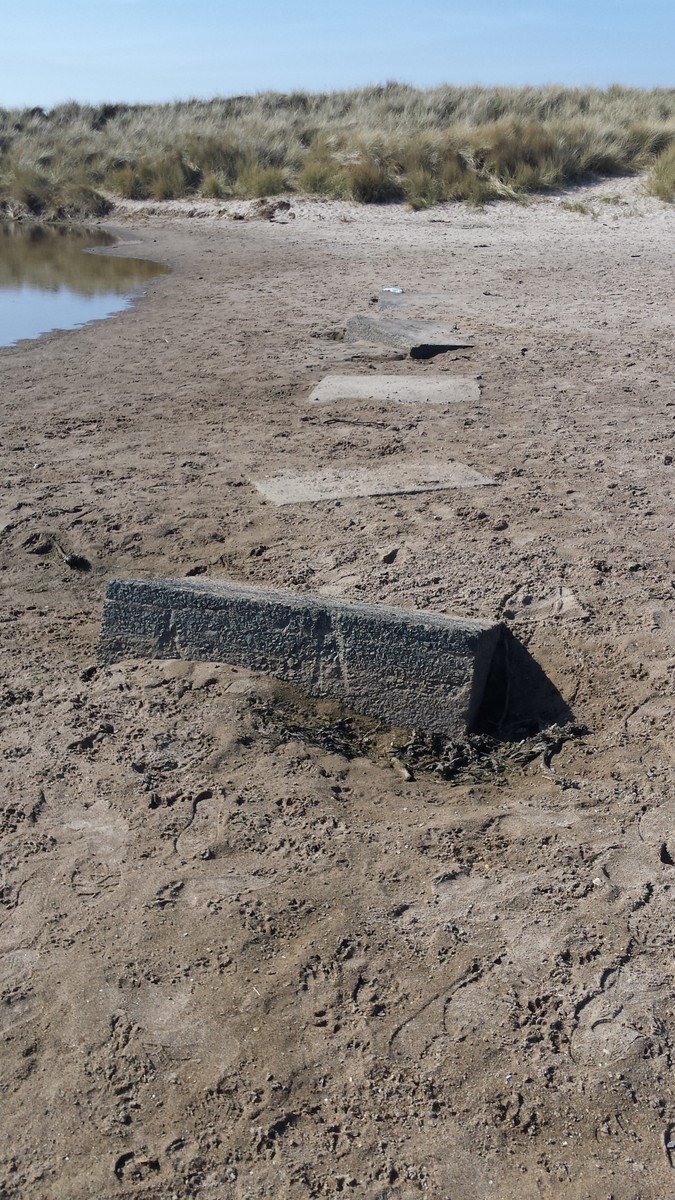
The main aims of anti-tank blocks were to obstruct a tanks progress or expose the vulnerable underside of a tank if they endeavoured to go over the anti-tank blocks. They come in varying shapes including: cubes, pimples or dragons teeth, coffins and cylinders. They can be found inland as well as on the coast.
Anti-tank blocks are almost always associated with defences of the Second World War; whilst tank warfare was used in the First World War, it was a late war technology and therefore anti-tank defences were not considered as part of World War One defensive landscapes in Britain.
Anti-tank cubes are the most common type of these defences; usually 3ft x 3ft or 5ft x 5ft in dimension. These can be found in rows, double and single, along the coastline at place such as Auburn near Bridlington and mainland side of the Lindisfarne Causeway in Northumberland. At Bridlington there are several rows of anti-tank cubes which are 5ft x 5ft; most run on a north-south alignment following the coast, but there are frequently a single row running perpendicular on an east-west alignment. The reason for this is to split up the foreshore, into fields of fire for the pillboxes and helps to contain an invasion force into these areas. Bridlington is one of CITiZAN Norths key site and have run several training workshops on the site.
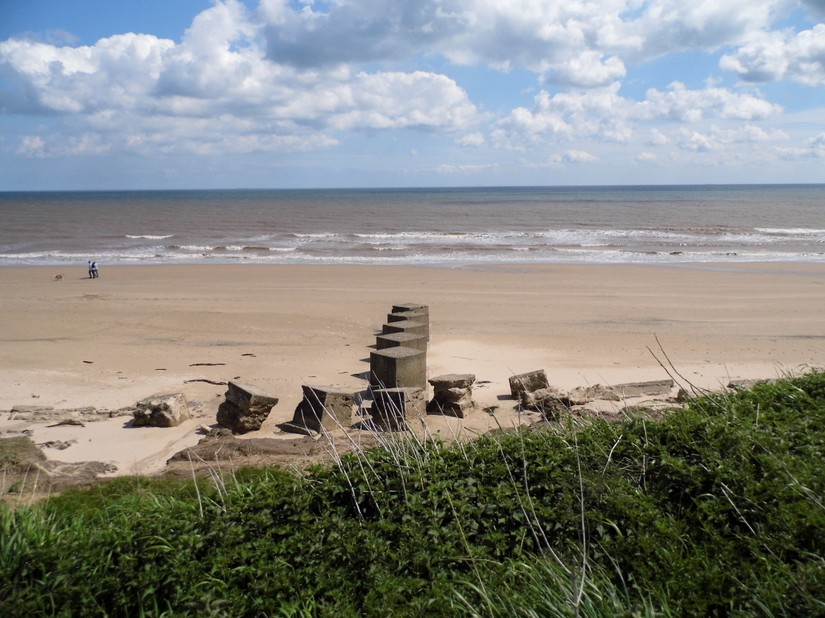
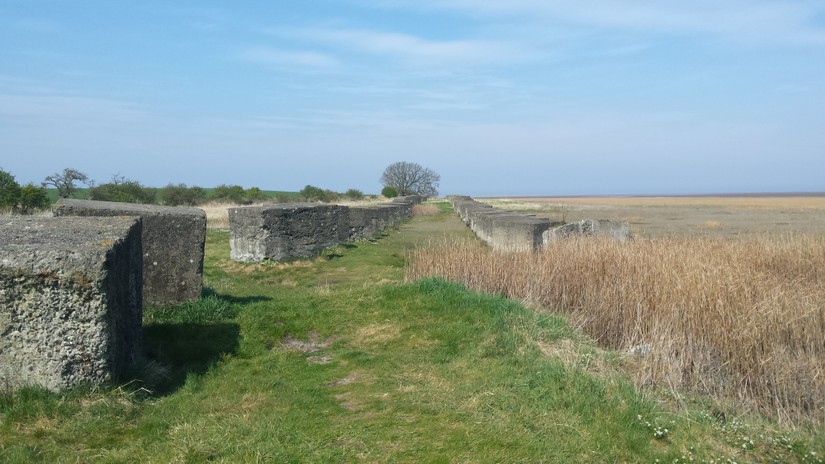
Another example of anti-tank defences are “Pimples”, which we square flat-topped pyramids. There were usually 3ft x 3ft or 4ft x 4ft in plan, and like cubes were used to expose the undercarriage of a tank as they drove over the top but also to tear the tracks of tanks too. These are also known as “dragons teeth”, but sometime those at the coast are instead referred to as “sharks teeth”.
Anti-tank cylinders are another type of anti-tank defence and these are cylindrical blocks of concrete with a domed top, usually constructed by pouring concrete into a length of drainage pipe. They are usually 3ft high with a 2ft diameter. Once erected barbed wire would have been fixed into the top. Defences like these were used in places like Kent and Hampshire; with the examples at Pegwell Bay in Kent perhaps being the best known example. The anti-tank cylinders at Pegwell Bay are Grade II listed as part of the defensive landscapes; with them listed for both Historical Interest and Rarity. At Pegwell, there is a line incorporating 300 of these types of feature, with steel fixture in the top for barbed wire entanglement. CITiZAN South East recorded these in June 2016.
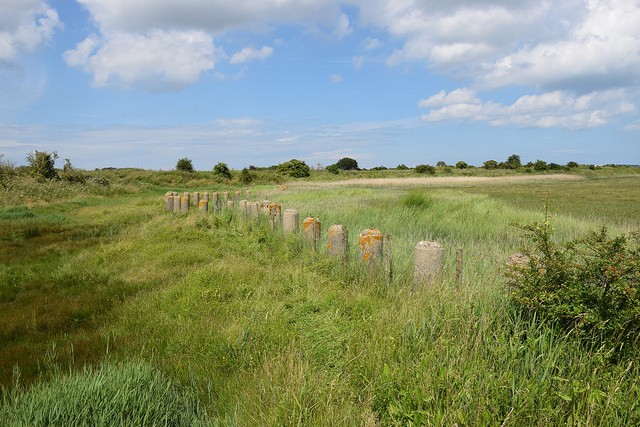
Anti-tank coffins are another type of obstacle. These were like an elongated square based pyramid which taped to one end, being 3ft high at the front tapering down to 1.5ft at the back and 5ft in length. They were usually set up at jaunty angles to one another.
Other types of anti-tank blocks include “tombstones, which were more cuboid than cubes, with chamfered edges on the east and western sides of the structure, which made them look similar to a tombstone, hence the name. Examples of these can be found at Cripp’s Corner in East Sussex, thought this is inland. This type of obstacle is not mentioned in the 1943 Military Training Manual on Obstacles.
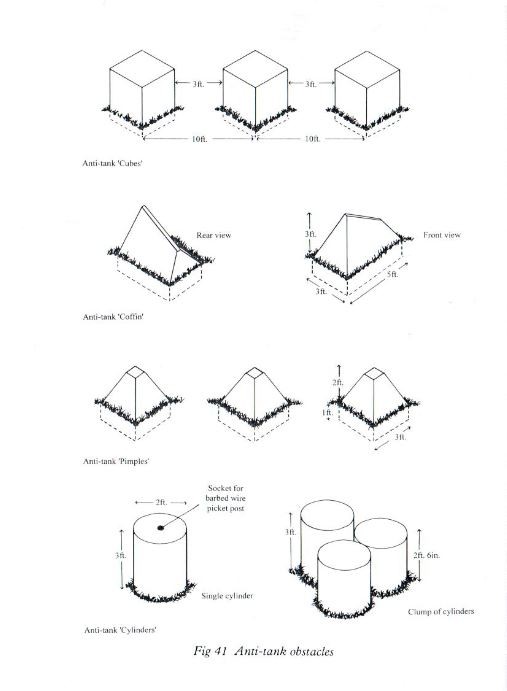
On to a few of the more interesting anti-tank cubes you may see around the country …
Starting with a couple of examples in Bridlington, East Yorkshire, on the foreshore. Here anti-tank cubes were used as part of the first line of defences. There are at least three known anti-tank blocks amongst these which have the initials marked on to them as graffiti. This can only have been done when the concrete was wet, before it had set. The culprits are WEP and GD, the latter of these having written their initials at least twice and handily added a date, 1941, which helps to place the defence in chronology with what was on-going in Europe.
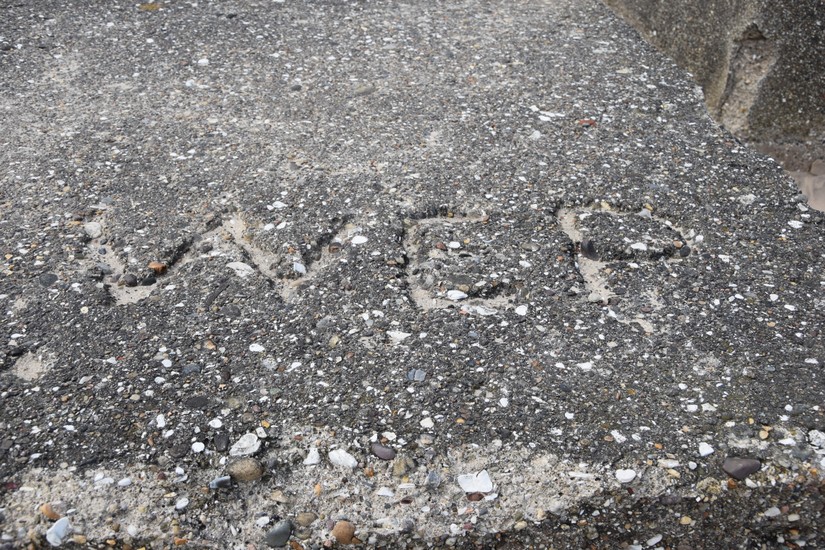
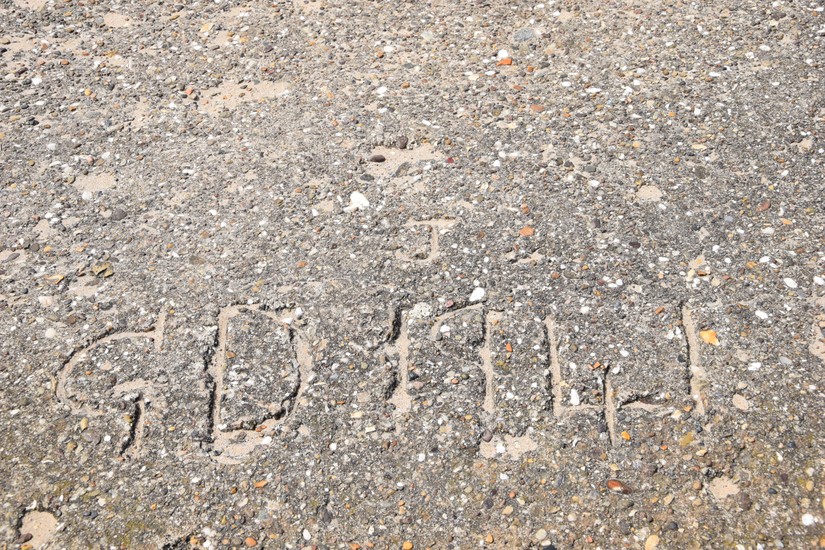
Sticking with Bridlington, much of the concrete used local aggregate. Unusually this means that occasionally even older archaeology could be incorporated into this later archaeology. At Bridlington there is an example of a flint scrapper embedded in an anti-tank cube, as it was used as aggregate when the concrete was made. There is a large amount of worked flint in around Bridlington and Flamborough with stone axes heads and numerous prehistoric settlements present nearby, so the pintail for further flint in World War Two anti-tank blocks in possible.
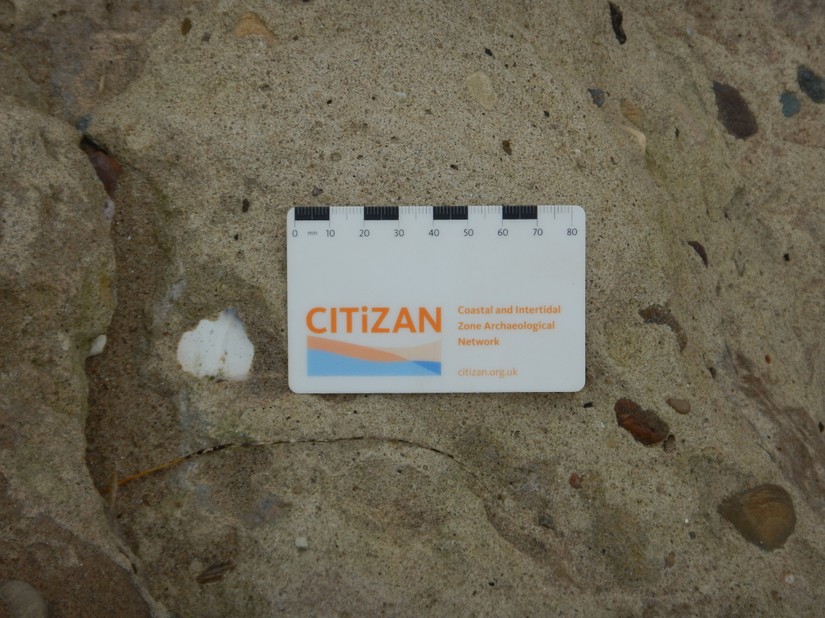
In Bamburgh, in Northumberland, someone has jazzed up the plain concrete anti-tanks blocks there by turning them into artwork. The famous pair are a set of red dice which are two of eight anti-tank blocks located in a row. More recently two more have been painted to resemble Rubik’s cubes.
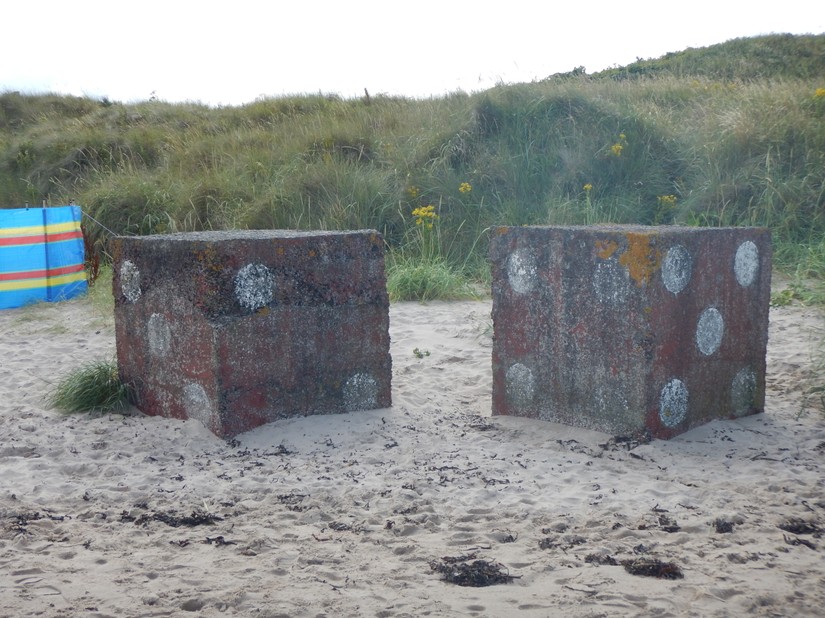
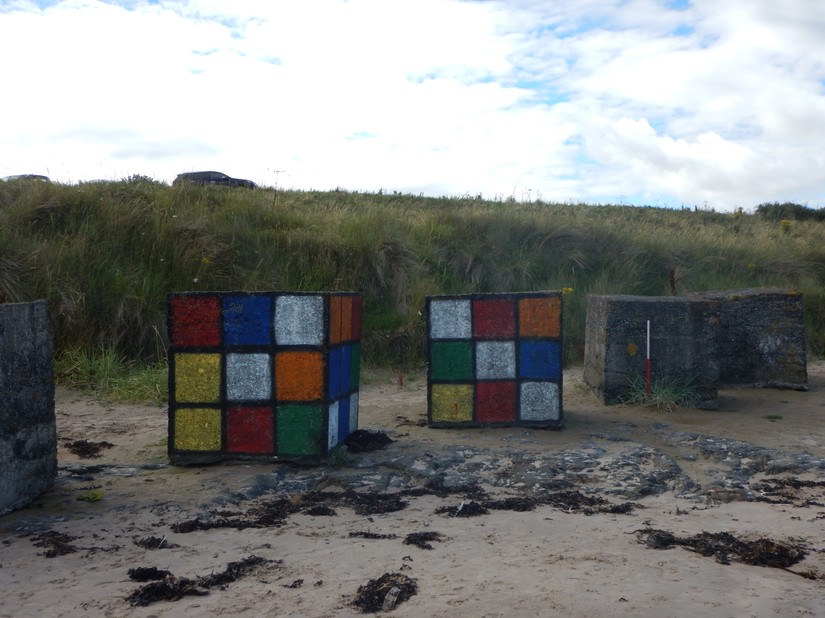
Once built to defend the coast from invasion many anti-tank defences now make up defences against the sea protecting the coastline from erosion. Many are enveloped into new defences, like the set which are placed in front of the rock armour protecting the harbour wall at Beadnell in Northumberland. Another example are of anti-tank cylinders used as sea defences at Freshwater Bay on the Isle of Wight. Not only are anti-tank blocks used at defences for the harbour at Beadnell, but the harbour wall is actually constructed of anti-tank cubes.
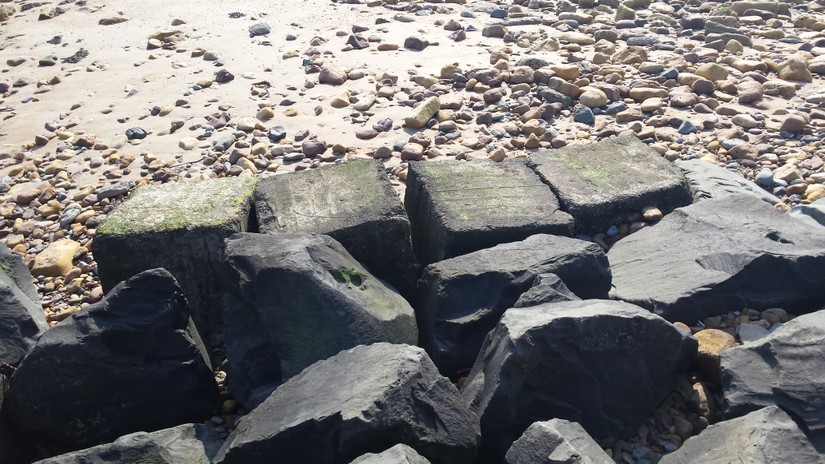
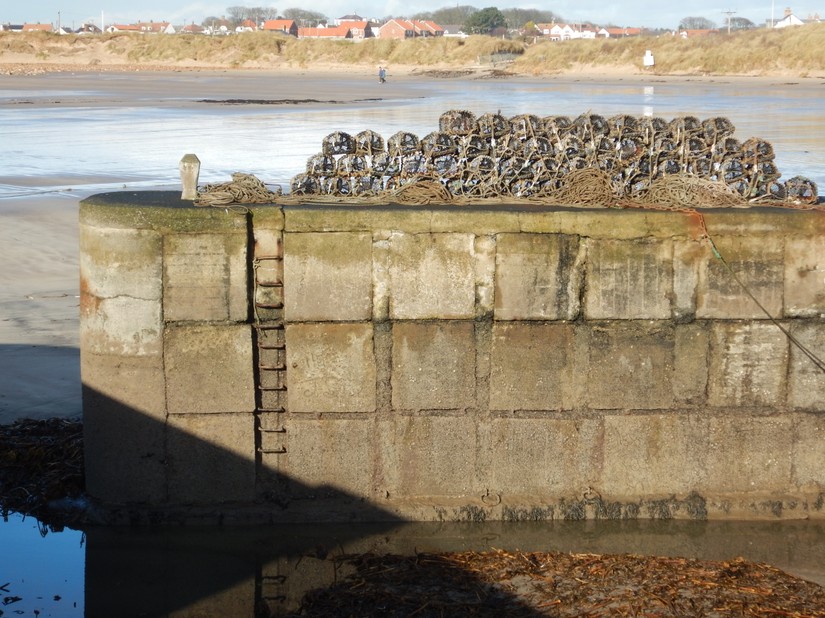
Anti-tank obstacles are not only made of concrete but there were also defences such as beach scaffolding, which were made of scaffolding pole, which were created in the shape of a right angled tringles, with the upright flat end seaward facing. This would make it difficult for amphibious landing crafts to land on the foreshore. Remains of this can still be found in various places along the foreshore. Barbed wire entanglement, also known as screw picket, were also frequent along the beaches during the Second World War and over 70 years on, the barbed wire entanglements can still be found.
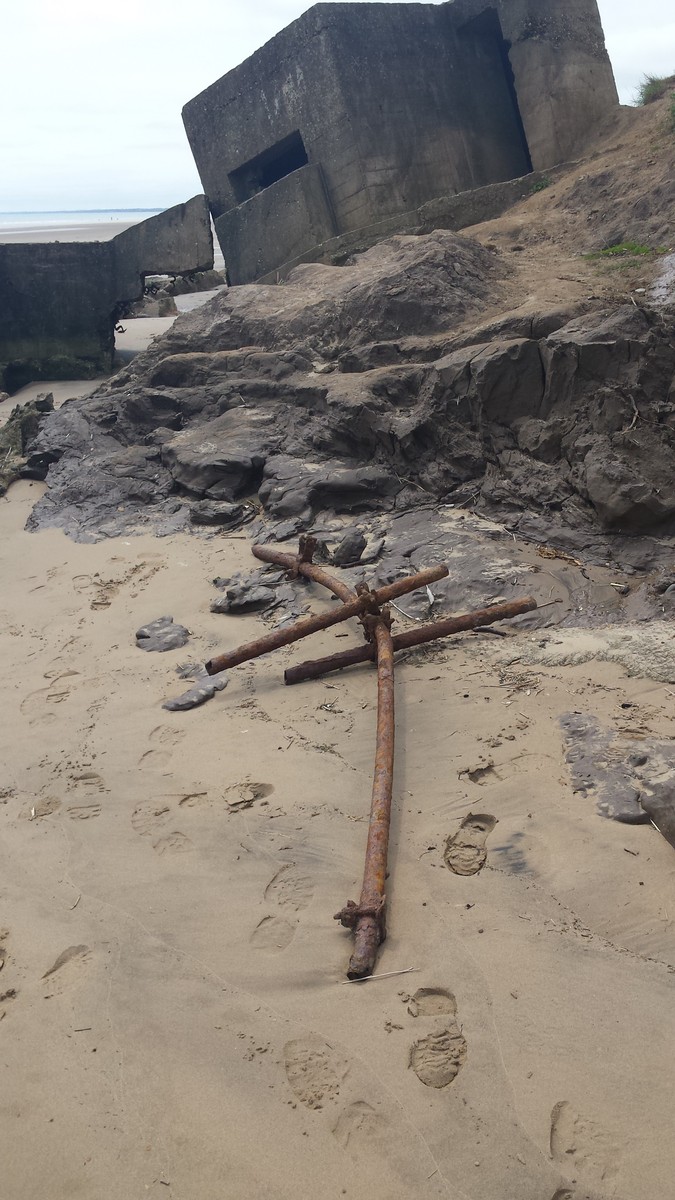
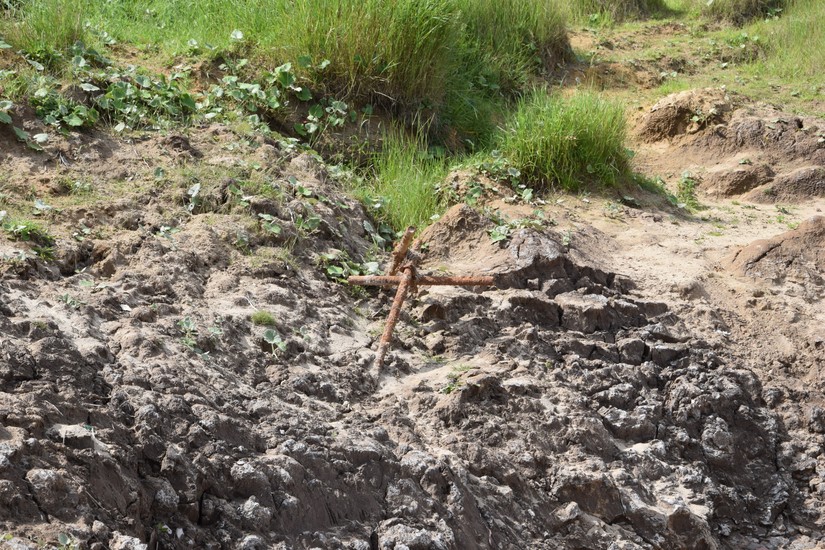
Bibliography
Brown I., Burridge D., Clarke D., Guy J., Hellis J., Lowry B., Ruckley N. and Thomas R. 1998. 20th Century Defences in Britain: An Introductory Guide, Handbook of the Defence of Britain Project. Council of British Archaeology.
Enoch N. 2015. Bathers warned to stay away from south coast beach after WWII jagged metal barriers designed to keep Nazis away are uncovered following coastal erosion from http://www.dailymail.co.uk/news/article-3164161/Bathers-warned-stay-away-south-coast-beach-WWII-jagged-metal-barriers-designed-Nazis-away-uncovered-coastal-erosion.html
Foot W. 2006. Beaches, fields, streets, and hills: the anti-invasion landscapes of England, 1940. Council for British Archaeology.
Historic England List Entry for the anti-tank cylinders at Pegwell Bay https://historicengland.org.uk/listing/the-list/list-entry/1413803
Hibbs P. 2016. Fun with Cement from http://www.pillbox.org.uk/blog/245141/ (a blog post where the blogger experiments making an anti-tank pimple)
Pillbox Study Group. c. 2011. Anti-Tank Obstacles from http://www.pillbox-study-group.org.uk/other-wwii-defensive-structures/anti-tank-obstacles/
War Office. 1943. Field Engineering (All Arms): Military Training Pamphlet No.30. Part III: Obstacles. London: His Majesty’s Stationery Office.








